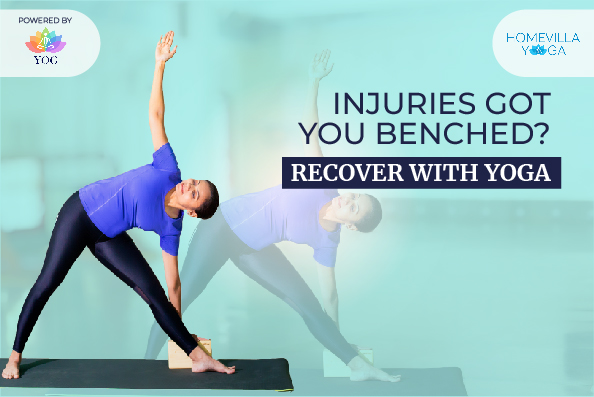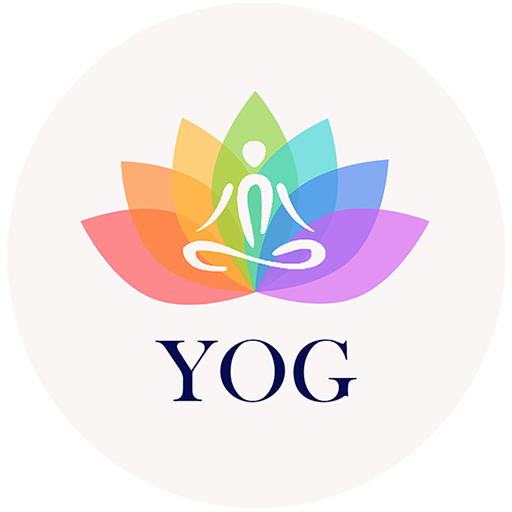The number of athletes getting injured each year can vary significantly depending on the sport and level of competition. However, sports-related injuries are relatively common, with millions of athletes experiencing them annually worldwide. On an average almost 2,000 injuries are reported for every 10,000 Professional athletes every year. In addition to the physical challenges, athletes often experience significant mental and emotional stress after sustaining an injury. For individuals who are accustomed to being active, competitive and driven by their athletic pursuits, being sidelined due to an injury can be emotionally distressing. Athletes may grapple with feelings of frustration, disappointment and even a loss of identity. The sudden disruption of their training routine and the uncertainty surrounding their recovery timeline can lead to heightened anxiety and a sense of helplessness.
This is where yoga becomes particularly valuable. By incorporating mindfulness, breathing exercises and meditation, yoga provides athletes with powerful tools to manage stress, cultivate resilience and develop a positive mindset. It allows them to redirect their focus, find inner calm amidst the challenges and nurtures a sense of acceptance and patience during the recovery process. Yoga’s holistic approach to healing addresses not only the physical aspect but also the mental and emotional well-being, supporting athletes in their journey towards complete recovery and returning to their sport with renewed strength and mindset.
Including yoga as a component of an athlete’s physical rehabilitation program can have multiple benefits. Not only does it accelerate the recovery process, but it also aids in the athlete’s mental and emotional recuperation following a sports injury. By incorporating yoga into their routine, athletes can enhance their overall recovery experience and decrease the likelihood of reinjury upon their return to the sport. Yoga provides a holistic approach to healing that addresses both the physical and psychological aspects, allowing athletes to regain their physical abilities while simultaneously fostering mental resilience and reducing the risk of future setbacks.
There are several reasons why athletes should consider using yoga as a mode of recovery from injuries:
- Enhanced Flexibility and Range of Motion: Yoga emphasizes stretching and lengthening of muscles, tendons and ligaments. Regular practice can improve flexibility and increase the range of motion, allowing athletes to recover from injuries and regain their full physical potential.
- Improved Strength and Stability: Yoga poses often engage and strengthen the core muscles, which contribute to overall stability and balance. By building strength in the supportive muscles around the injured area, athletes can prevent future injuries and promote better overall athletic performance.
- Mind-Body Connection: Yoga is not just a physical practice; it also involves mindfulness and breath awareness. By incorporating meditation and breathing techniques, athletes can develop a heightened sense of body awareness, allowing them to better understand their body’s limitations and make informed decisions during recovery.
- Reduced Stress and Anxiety: Injuries can take a toll on an athlete’s mental well-being, causing stress, frustration and anxiety. Yoga’s focus on breath control and relaxation techniques can help alleviate these negative emotions, promoting a more positive mindset during the recovery process.
- Faster Healing and Injury Prevention: Certain yoga poses and sequences promote circulation, aiding in the delivery of oxygen and nutrients to injured tissues. This can accelerate the healing process and reduce recovery time. Moreover, by strengthening the body holistically, yoga helps athletes prevent future injuries by creating a more balanced and resilient physical foundation.
- Rehabilitation of Specific Injuries: Yoga can be adapted to address specific injuries and aid in their rehabilitation. Skilled yoga instructors can tailor sequences to target affected areas, gradually reintroducing movement and promoting healing in a controlled manner.
It is important for athletes to consult with healthcare professionals, such as physical therapists or sports medicine specialists, before integrating yoga into their injury recovery process. These professionals can provide guidance on which poses and sequences are suitable for individual circumstances and help ensure proper alignment and technique.
Overall, incorporating yoga into an athlete’s recovery routine can offer numerous benefits, both physically and mentally. It can support healing, enhance performance and contribute to a more balanced and sustainable athletic lifestyle.
In addition to the numerous benefits mentioned above, there are specific therapeutic asanas (yoga poses) that athletes can try during their injury recovery process. These asanas help in promoting flexibility, strength and healing.
Here are a few examples:
1. Child’s Pose (Balasana): This gentle resting pose stretches the lower back, hips and ankles. It helps to release tension in the back and promotes relaxation.

2. Downward Facing Dog (Adho Mukha Shvanasana): This pose stretches and strengthens the entire body, including the arms, shoulders, hamstrings and calves. It also helps to improve blood circulation and rejuvenate the body.
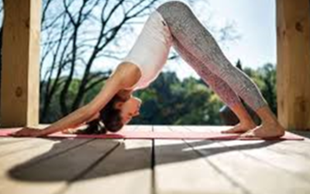
2. Warrior II (Virabhadrasana II): This pose strengthens the legs, opens the hips and improves balance. It also promotes focus and stability.
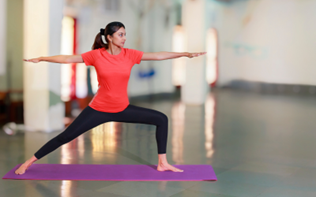
3. Bridge Pose (Setu Bandhasana): This pose strengthens the back, glutes and hamstrings. It also helps to relieve lower back pain and stretches the chest and neck.
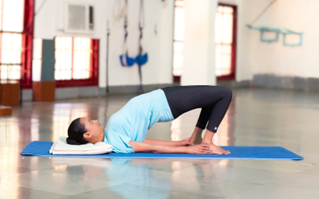
4. Tree Pose (Vrikshasana): This balancing pose strengthens the legs and improves stability. It also enhances concentration and promotes a sense of groundedness.
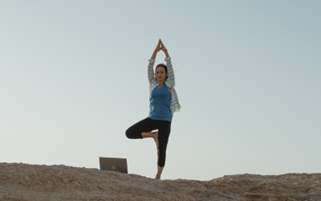
5. Supine Spinal Twist (Supta Matsyendrasana): This gentle twist helps to release tension in the spine and stretches the hips and lower back. It promotes relaxation and can alleviate back pain.
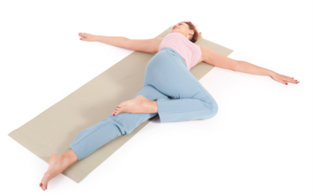
6. When practicing these asanas during injury recovery, it’s important to use props to support the body and avoid strain. Some useful props include:
- Yoga blocks: These can be used to provide support and stability in standing poses or to modify the height or distance between body parts.
- Bolsters: These long, cushioned pillows are excellent for providing support and comfort during restorative poses or for elevating certain body parts.
- Straps: These are useful for extending reach in poses where flexibility is limited, allowing the athlete to gradually deepen the stretch over time.
- Blankets: These can be folded and used as padding or support under sensitive body parts, such as knees or hips.
- Yoga mat: A good-quality, non-slip yoga mat provides stability and traction during practice.
It’s important for athletes to listen to their bodies and practice within their comfort zone while recovering from an injury. It’s recommended to work with a qualified yoga instructor who can guide them through appropriate modifications and sequences tailored to their specific needs.
By incorporating yoga into their injury recovery process and utilizing therapeutic asanas and props, athletes can optimize their rehabilitation, enhance their overall well-being and return to their sport stronger and more balanced than before.
Remember Patience, Consistency and Self-care are key in the journey towards a full recovery!

